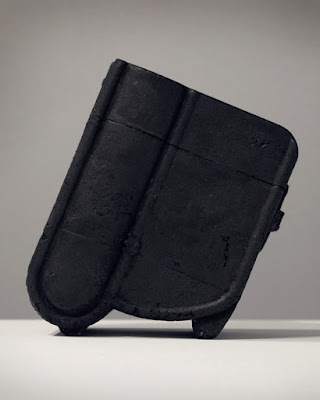And finally, here's my third offering in the guest post series for Funaki, last winter during the early days of the pandemic when the gallery was closed and we were looking for alternative ways to communicate and interact. I wrote about materials I use, know and love: enamel, steel and concrete. Here's concrete!
I was fortunate to discover this interesting character almost by accident. Some years ago, a bag from Bunnings was my leap of faith (yup, a panic solution) while planning a sculptural installation with no equipment to fabricate metal in a large scale. Concrete offered an alternative to work without heat or special tools, and allowed free experimentation without financial concerns. Soon, there was no return.
At first glance–feel–concrete is heavy and dense, cool to the touch. It carries associations of construction and the industrial; of urban structures and surfaces; of my immediate world and visual interests. It can be rough, or polished like smooth marble, and is a reliable protector of fragile materials, such as glass, embedded. - From an intimate distance, concrete also reveals its sensual and sensitive side. Toned with natural pigments, the shades resonate with things I keep returning to: The light at dusk and dawn; the changing skies, seasons and weather patterns … all somehow connected to our own human emotions in flux. This poetic nature of concrete keeps surprising and captivating me.
Finally, I think it’s great concrete is used by thousands of DIY enthusiasts, for all sorts of objects and ornaments. This gives it a democratic, joyous quality. Anyone can use concrete, giving such obvious satisfaction to those who may not otherwise be creatively engaged. It’s the material of inspiration and possibility!
Images (including the floor of Funaki on Crossley St): Inari Kiuru, 2015-2020






























